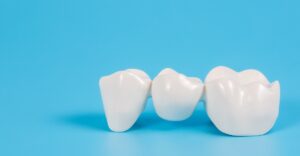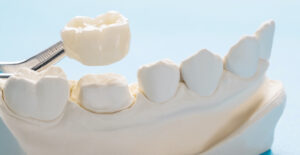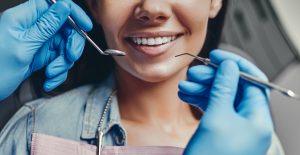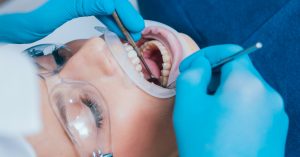Bruxism is the technical term for grinding and clenching that wears down teeth and may cause pain and /or sensitivity. People who grind and clench, called bruxers, unintentionally bite down too hard at inappropriate times, often in their sleep.
In addition to grinding teeth, bruxers also may bite their fingernails, pencils etc. or chew the inside of their cheek. People usually aren’t diagnosed with bruxism early enough because so many people don’t realize they have the habit. About one in three people suffer from bruxism, which can easily be treated by a dentist.
People who clench may experience jaw pain, tense or sore muscles and headaches along with excessive wear of their teeth.
Warning Signs of Tooth Grinding
When a person has the habit of clenching or grinding, the teeth look worn down. The enamel may be rubbed off, exposing the inner layer called dentin. When exposed, dentin may cause sensitivity. Bruxers may experience headaches or pain in their jaw(temporomandibular)joint which may manifest itself as a popping or clicking sound. Jaw muscles may be sore, especially on awakening in the morning or as the day progresses. Some people may experience limited jaw opening becasue of chronic muscle spasm. Teeth may have fractures or craze lines. Chronic bruxers may notice their teeth getting loose over a short period of time.
Causes of Bruxism
Stress and certain personality types are the root cause of bruxism. Bruxism often affects people with a nervous disposition. Anger, pain and frustration can also trigger bruxing. People who are aggressive, competitive(commonly called as Type A) and harried also may be at a greater risk for bruxism. Women are known to have a higher incidence of bruxism.
Preventing Tooth Grinding
During regular dental visits, the dentist automatically checks for physical signs of bruxism. If the dentist notices signs of bruxism, the condition may be observed over several visits to be sure of the problem before recommending and starting therapy.
The objective of therapy is to get the bruxer to change behavior by learning how to rest the tongue, teeth and lips properly. When some people become aware of their problem, simply advising them to rest their tongue upward with teeth apart and lips shut may be enough to change their behavior and relieve discomfort. However, usually some kind of interventional therapy is required. Your dentist can make you a plastic mouth appliance, such as a night guard that absorbs the force of biting and directs the pressure away from the teeth. This appliance can prevent future damage to the teeth and helps change the patient’s destructive clenchign patterns.
Biofeedback is being explored to treat daytime clenchers by using electronic instruments to measure muscle activity and to teach patients how to reduce muscle activity when the biting force becomes too great. Researchers are looking for other ways of treating bruxism, especially for those who tend to clench in their sleep.







